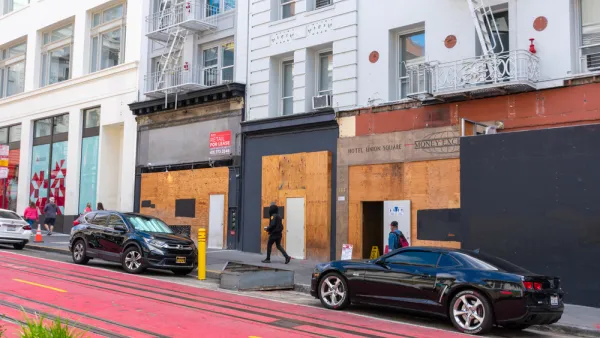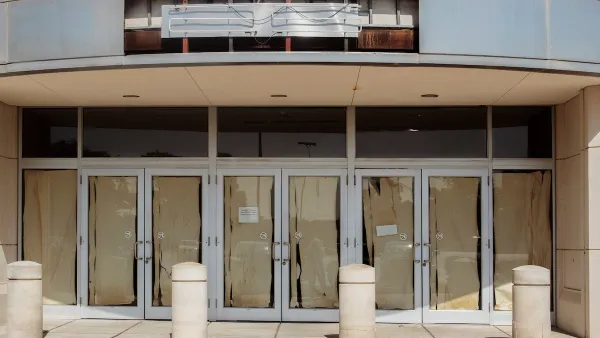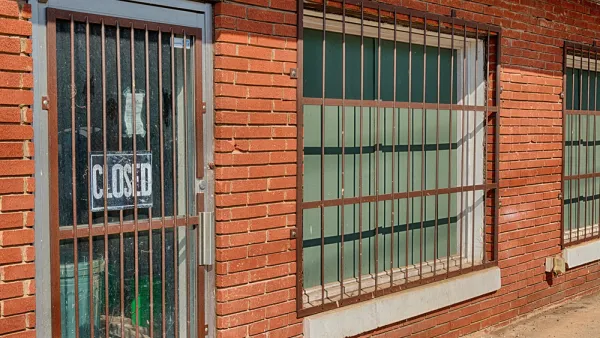Empty storefronts depress property values and suppress small business growth. What can cities do to fill these vacancies?

Writing in Next City, Ilana Preuss outlines a set of solutions for reviving urban commercial properties left vacant in recent years. “Our downtowns had suffered from commercial vacancies long before the pandemic, but COVID-19 expanded the problem dramatically,” Preuss writes. This matters because “Vacancies have a major negative impact on our downtowns and neighborhood centers, depressing surrounding property values, encouraging more neglect and suppressing the growth of small businesses.”
But how to fill these “debilitating vacancies?” Preuss has some ideas. “Fortunately, we know a lot about how to grow local businesses, especially small-scale manufacturers, and prepare them to make the transition from home-based or shared space enterprises to brick-and-mortar stores. The challenge is to match their needs with those of the owners of vacant storefronts.”
The article outlines the varied reasons why storefronts remain vacant, from renovation costs to mismatches between business needs and available properties. “Against this backdrop, innovative approaches are needed,” Preuss writes. “One option is to increase the adoption of vacant property ordinances, which typically impose added fees on properties left vacant long-term.” Cities like San Francisco and Washington, D.C. recently imposed vacancy taxes, for example.
“Another option is to use tax increment financing or other local funding vehicles to provide matching grants to property owners for storefront buildout with signed tenants, as does Longmont, Colorado’s Downtown Development Authority.” According to Preuss, “This option can be applied in markets where the cost of construction isn’t justified by current lease rates, and it can make storefront space affordable to small businesses.”
The article lists other options, such as encouraging local ownership of commercial properties and investing in land trusts, which can work well in different markets. Moving forward from the pandemic, Preuss asserts, requires taking steps to revitalize downtowns and move forward as the pandemic eases.
FULL STORY: As We Move Through the Pandemic, Here’s How to Fill Vacant Storefronts

Analysis: Cybertruck Fatality Rate Far Exceeds That of Ford Pinto
The Tesla Cybertruck was recalled seven times last year.

National Parks Layoffs Will Cause Communities to Lose Billions
Thousands of essential park workers were laid off this week, just before the busy spring break season.

Retro-silient?: America’s First “Eco-burb,” The Woodlands Turns 50
A master-planned community north of Houston offers lessons on green infrastructure and resilient design, but falls short of its founder’s lofty affordability and walkability goals.

Test News Post 1
This is a summary

Analysis: Cybertruck Fatality Rate Far Exceeds That of Ford Pinto
The Tesla Cybertruck was recalled seven times last year.

Test News Headline 46
Test for the image on the front page.
Urban Design for Planners 1: Software Tools
This six-course series explores essential urban design concepts using open source software and equips planners with the tools they need to participate fully in the urban design process.
Planning for Universal Design
Learn the tools for implementing Universal Design in planning regulations.
EMC Planning Group, Inc.
Planetizen
Planetizen
Mpact (formerly Rail~Volution)
Great Falls Development Authority, Inc.
HUDs Office of Policy Development and Research
NYU Wagner Graduate School of Public Service




























